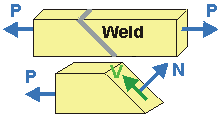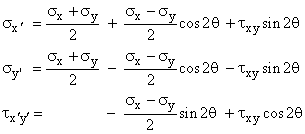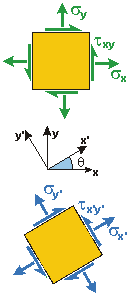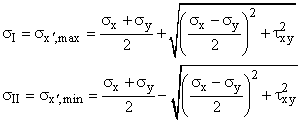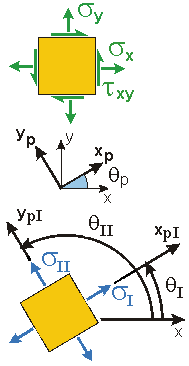So far, we have looked at stress elements (material points under stress) that align with a typical x-y-z coordinate system. The x-y-z coordinate system are convenient when calculating stresses from the applied loads.
However,
there are times when rotating or transforming the stress
element to view it in another direction is necessary. Two reasons to view a stress element in another orientation include:
- To determine the stress in another direction (e.g., normal and parallel to the the plane of a weld);
- To determine the Maximum Normal Stress or the Maximum Shear Stress at a point (useful to assess if a material in a complex state of stress will fail).
